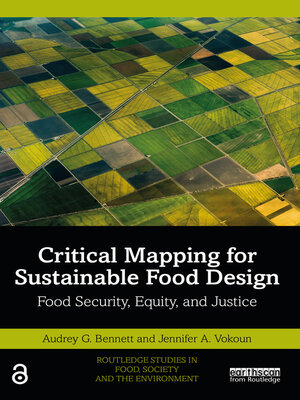Critical Mapping for Sustainable Food Design
ebook ∣ Food Security, Equity, and Justice · Routledge Studies in Food, Society and the Environment
By Audrey G. Bennett

Sign up to save your library
With an OverDrive account, you can save your favorite libraries for at-a-glance information about availability. Find out more about OverDrive accounts.
Find this title in Libby, the library reading app by OverDrive.



Search for a digital library with this title
Title found at these libraries:
| Library Name | Distance |
|---|---|
| Loading... |
This book introduces critical mapping as a problematizing, reflective approach for analyzing systemic societal problems like food, scoping out existing solutions, and finding opportunities for sustainable design intervention.
This book puts forth a framework entitled "wicked solutions" that can be applied to determine issues that designers should address to make real differences in the world and yield sustainable change. The book assesses the current role of design in attaining food security in a sustainable, equitable, and just manner. Accomplishing this goal is not simple; if it was, it would not be called a wicked problem. But this book shows how a particular repertoire of design tools can be deployed to find solutions and strategize the development of novel outcomes within a complex and interconnected terrain. To address the wicked problem of food insecurity, inequity, and injustice, this book highlights 73 peer-reviewed design outcomes that epitomize sustainable food design. This includes local and regional sustainable design outcomes funded or supported by public or private institutions and local and widespread design outcomes created by citizens. In doing so, this book sets the stage for an evidence-driven and evidence-informed design future that facilitates the designers' visualization of wicked solutions to complex social problems, such as food insecurity. Drawing on an array of case studies from across the world, from urban rooftop farms and community cookers to mobile apps and food design cards, this book provides vitally important information about existing sustainable food design outcomes in a way that is organized, accessible, and informative.
This book will be of great interest to academics and professionals working in the field of design and sustainable food systems. Students interested in learning about food and sustainability from across design studies, food studies, innovation and entrepreneurship, urban studies, and global development will also find this book of great use.







